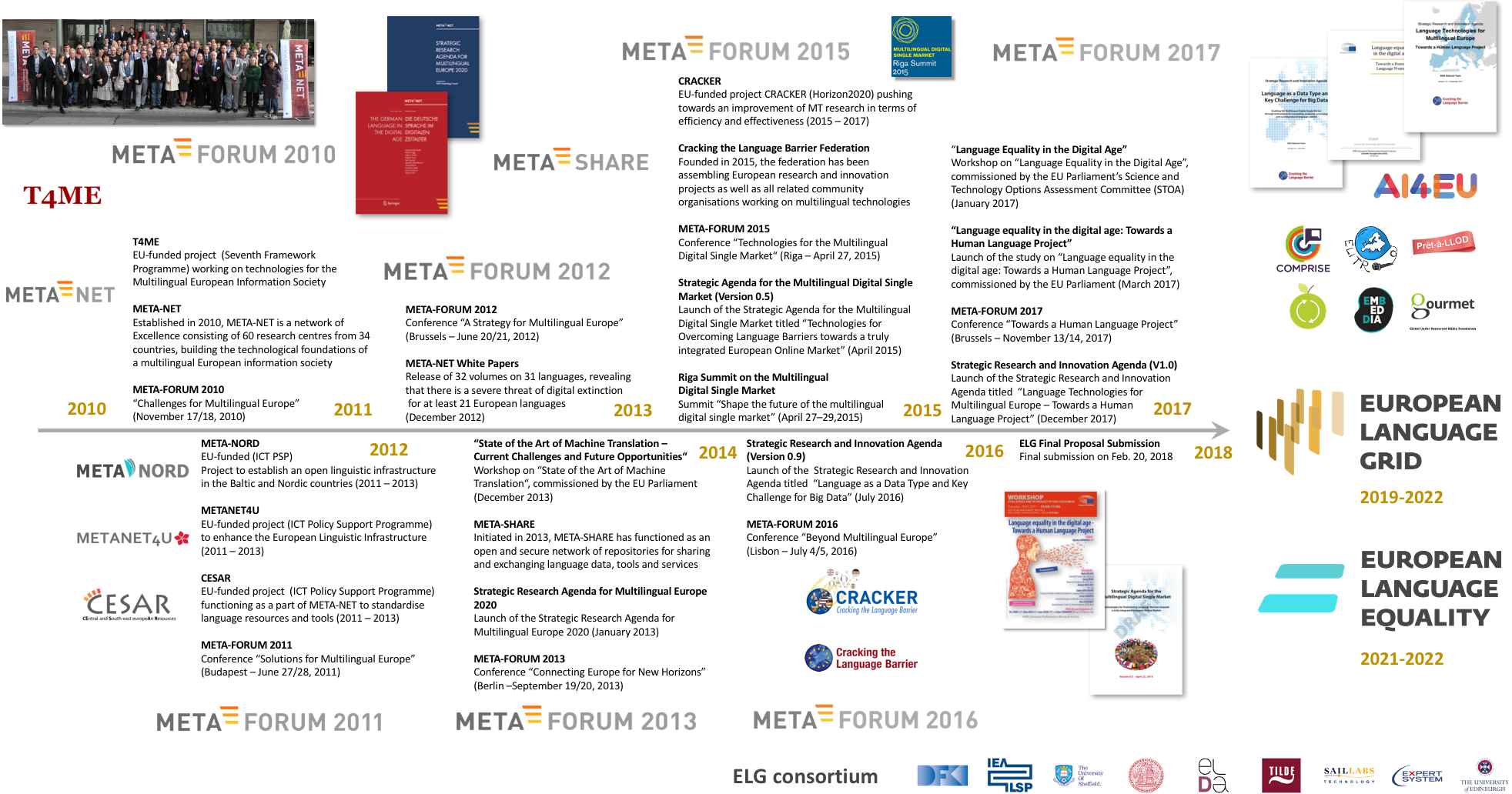With 24 official EU and many more additional languages, multilingualism in Europe and an inclusive Digital Single Market can only be enabled through Language Technologies. European LT business is dominated by thousands of SMEs and a few large players. Many are world-class, with technologies that outperform those of the global players. However, European LT business is also fragmented – by nation states, languages and sectors. This is why the European Language Technology landscape and community has not been able to reach its full potential yet. We address this challenge by establishing the ELG as the primary platform for Language Technology in Europe.
The ELG develops and deploys a
It will enable the commercial and non-commercial European LT community to deposit and upload their technologies and data sets into the platform, to deploy them through the grid, and to connect with other resources. The European Language Grid will boost the Multilingual Digital Single Market towards a thriving
Through
Timeline
The following timeline presents the most important phases and milestones of the European Language Grid project.

Background and History
The history of the European Language Grid dates back to 2010 and the original
Already back then we suggested to make use of powerful multilingual, cross-lingual and monolingual technologies to support the emerging Multilingual Digital Single Market. Later on, projects such as
Now, with the ELG project, the time has finally come to build upon all these different technology and strategy development as well as community building activities when developing the European Language Grid as the primary platform for Language Technologies in Europe.
